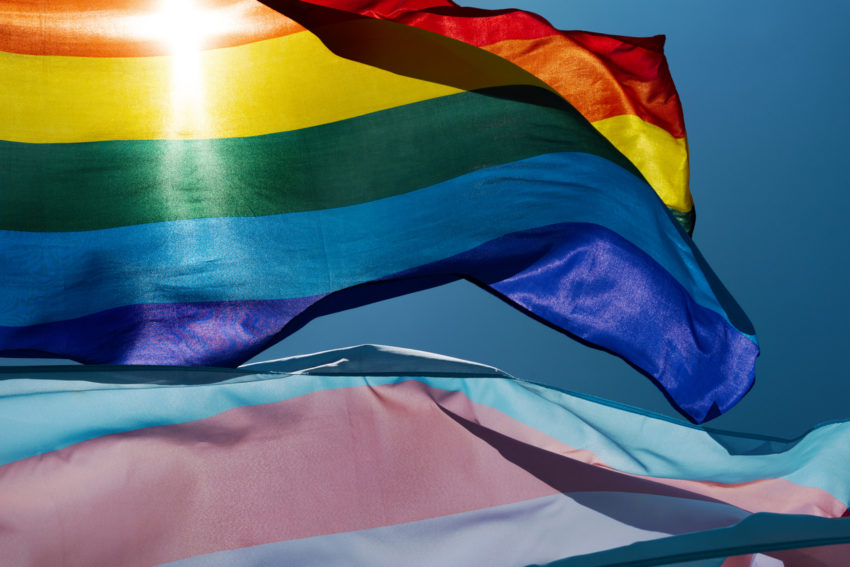
Share On Social!
Latino LGBTQ youth are 30% more likely to attempt suicide than non-Latino LGBTQ youth, according to a new study by the Trevor Project, a non-profit focused on suicide prevention for LGBTQ youth.
Part of the reason is the stress-related stigma, discrimination, and difficulties expressing gender and sexual identity, which many LGBTQ people of color face.
But, unfortunately, Latino LGBTQ youth also often deal with the stress of immigration, which can take a heavy toll on a person’s mental health.
“The higher risk of attempting suicide among Latinx LGBTQ youth compared to non-Latinx LGBTQ youth can be explained by greater worries about themselves or family being detained or deported due to immigration policies,” according to the Trevor Project.
LGBTQ and Mental Health
Members of the LGBTQ community have historically suffered from mental health issues.
“LGBTQ individuals are more than twice as likely as heterosexual men and women to have a mental health disorder in their lifetime,” according to the American Psychiatric Association.
Although acceptance for the LGBTQ community has increased over the last few years, LGBTQ individuals still face discrimination and bias.
“In 27 states, there are no explicit statewide laws at all protecting people from discrimination on the basis of sexual orientation or gender identity in employment, housing and public accommodations,” according to Freedom for All Americans.
Discrimination and lack of acceptance can lead to mental health distress. Some of the mental illnesses that LGBTQ individuals are more likely to suffer from are anxiety, depression, and substance abuse.
Young LGBTQ individuals are especially at risk.
“Forty percent of young LGBTQ people have considered suicide in the last year; that rises to more than half for trans and non-binary youth,” according to other Trevor Project data, cited by
As with any group, Latinos and other people of color tend to be the most at risk.
Latinos and Mental Health
We know Latinos suffer from mental health issues disproportionately.
Latino children are more likely to deal with depression and stress that often goes untreated, according to a Salud America! research review.
Why does this happen?
Latinos experience a lack of access to mental health services, discrimination, poverty, school and family issues, the impacts of immigration, and more.
Latino immigrants especially are at risk for severe mental health issues due to the impact of migration on a family. This often-stressful life change can be devastating when families are separated at the border. And if Latino immigrants are undocumented, they have the additional stress from a fear of deportation or detainment and may struggle to get access to mental health resources.
“For the Latinx/Hispanic community, mental health and mental illness are often stigmatized topics resulting in prolonged suffering in silence. This silence compounds the range of experiences that may lead to mental health conditions including immigration, acculturation, trauma, and generational conflicts,” according to Mental Health America.
And even when Latinos do seek help for mental illness and suicide prevention, they face many hurdles.
“The Latinx/Hispanic community faces unique institutional and systemic barriers that may impede access to mental health services, resulting in reduced help-seeking behaviors,” according to Mental Health America.
Latino LGBTQ and Mental Health
Beyond the typically mental health experience of Latinos, Latino LGTBQ youth face an even more difficult path, according to the new data from the Trevor Project.
Here are some key findings:
- 17% of Latino LGBTQ youth attempted suicide in the last year
- Transgender and nonbinary Latino youth had more than twice the odds of attempting suicide
- Latino LGBTQ youth who completed the survey in Spanish were at 84% increased risk of attempting suicide
- Latino LGBTQ youth who were struggling to meet basic needs had more than twice the odds of attempting suicide
- Almost half (47%) of Latino LGBTQ youth worried “a lot” or “sometimes” about immigration issues related to detainment or deportation
“Latinx LGBTQ youth who worry a lot about themselves or a family member being detained or deported due to immigration policies were at double the risk of attempting suicide compared to Latinx LGBTQ youth who never worry about it,” according to the Trevor Project.
What Can You Do?
No one deserves to suffer from mental health issues.
Latino LGBTQ youth are especially at risk, so they need our support.
One way you can help is to see what health resources are available in your community. Download a health equity report card to see how your area stacks up in housing, transit, poverty, health care, food, and other health equity issues compared to your state and nation.
You can also take these 10 steps to improve mental health services for Latino immigrants:
- Listen to the Stories of DACA Recipients.
- Explore the Impact of the COVID-19 Pandemic.
- Learn the Basics of Immigration Policy and Stay Attuned to Changes.
- Identify and Challenge Your Own Biases and Misconceptions About Immigrants.
- Review Existing Models and Recommendations for Clinical Work with Immigrants.
- Integrate Trauma-Informed Care and Multicultural Competence in Your Clinical Style.
- Strengthen Psychological and Behavioral Coping Strategies.
- Foster Immigrants’ Wisdom and Resilience.
- Connect with Community Resources: Legal Support, Educational Programs, Financial Help, Health Services, Advocacy and Activist Groups.
- Engage in Continuing Education, Supervision, Consultation, and Professional Support.
Showing support for LGBTQ youth is vital, according to Amy Green, the study lead and director of research at The Trevor Project, NBC News reports.
“The simple act of acceptance and letting kids express their identity can be incredibly powerful,” Green said.
Explore More:
Mental HealthBy The Numbers
142
Percent
Expected rise in Latino cancer cases in coming years




I know this is a two year old article, but Bias is another reason why some Hispanic people think about or attempt suicide. I’m actually part Filipino, German and English and I ended up looking stereotypically Hispanic and my surname is Spanish due to my Filipino side since the Spanish colonized the Philippines. I’m a woman though and I’ve thought about it for a number of reasons involving my health from a rare disorder that caused learning issues and also I have obvious cancer symptoms Ive tried getting help with. I’ve also been treated poorly and sometimes in very scary situations because of obvious Bias and Prejudice due to my appearance. I’m just saying Bias against people who are Hispanic and “look Hispanic” is a real thing. I apologize if it was in this article but I didn’t notice it, But I do apologize if its in there. I just think it needs to be addressed more. Thank You